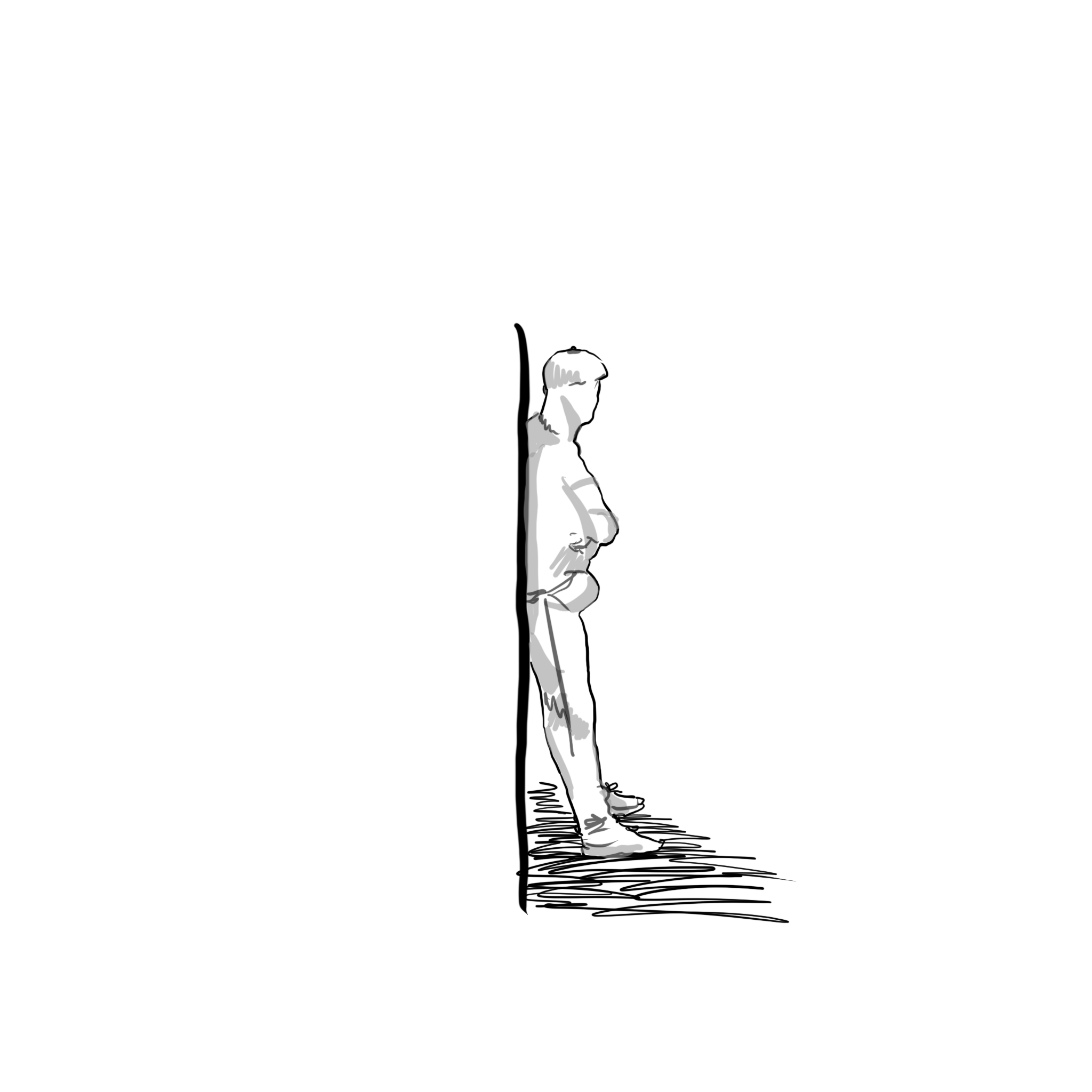practicultural albany park
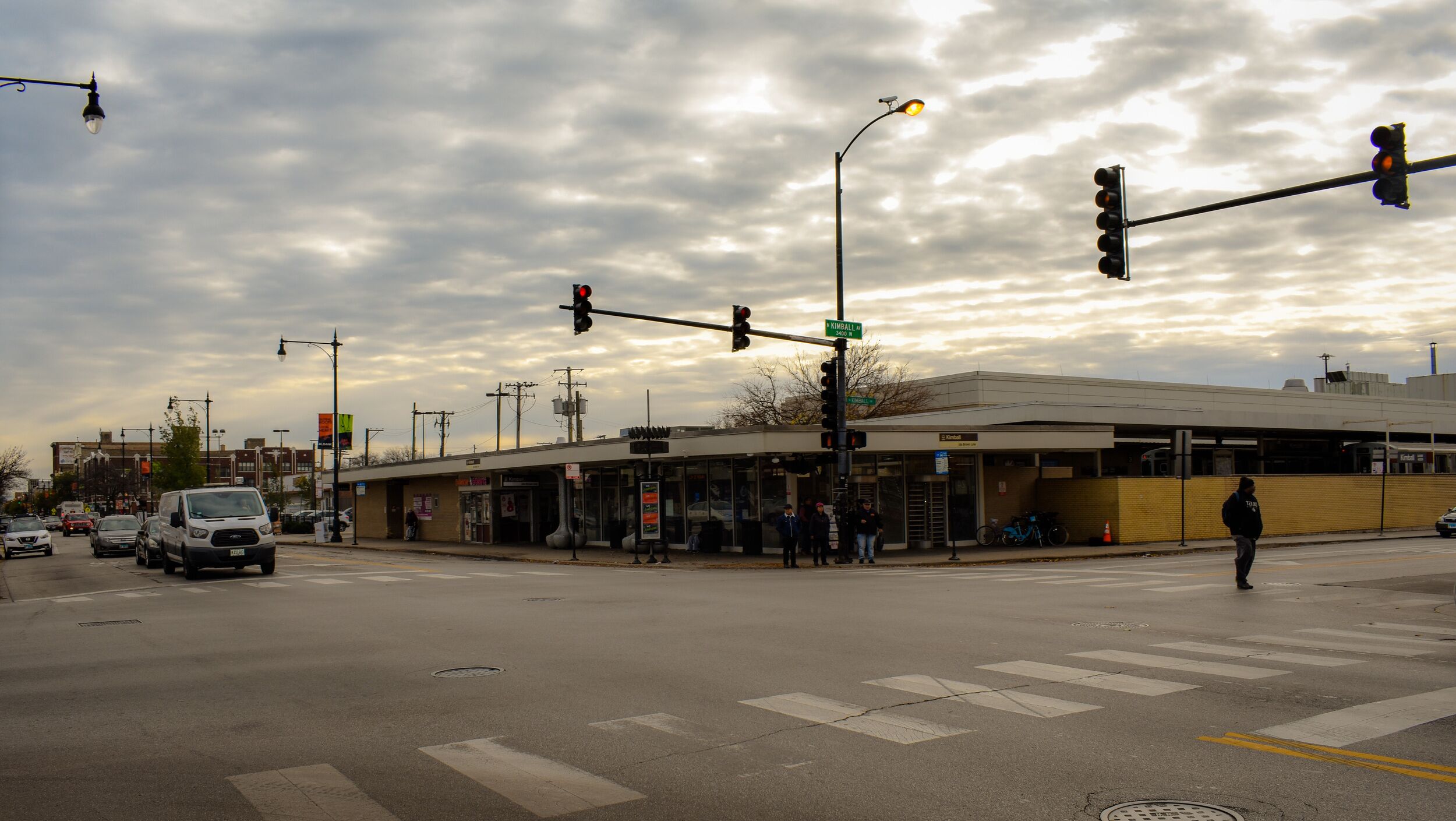
Slide wipe. 52° at 5:32. Albank’s digital banner informs me that the workweek has come to a frigid end. Framing the moving banner is a retro title, the logo of Albank, a midsized, midcentury bank whose name is a cheeky ode to Albany Park, a place often termed Chicago’s most ethnically diverse neighborhood. I’m seated on the bank’s lawn, a rectangle of grass with holes cut out for modern metal garden sculptures. Off of the spiraling silver bodies, syncopated blue lights glint— from the police SUVs across the street. Someone at the intersection of Lawrence and Kimball has been hit by a car.
As the Brown Line comes to its final screeching halt at Kimball, a person lets out a blood-curdling scream from not too far away. As I step out of the station, I realize that “not too far away” is no more than fifty feet. A man in a Popeyes Chicken uniform hunches over and vomits on the corner as a crowd floats around him.
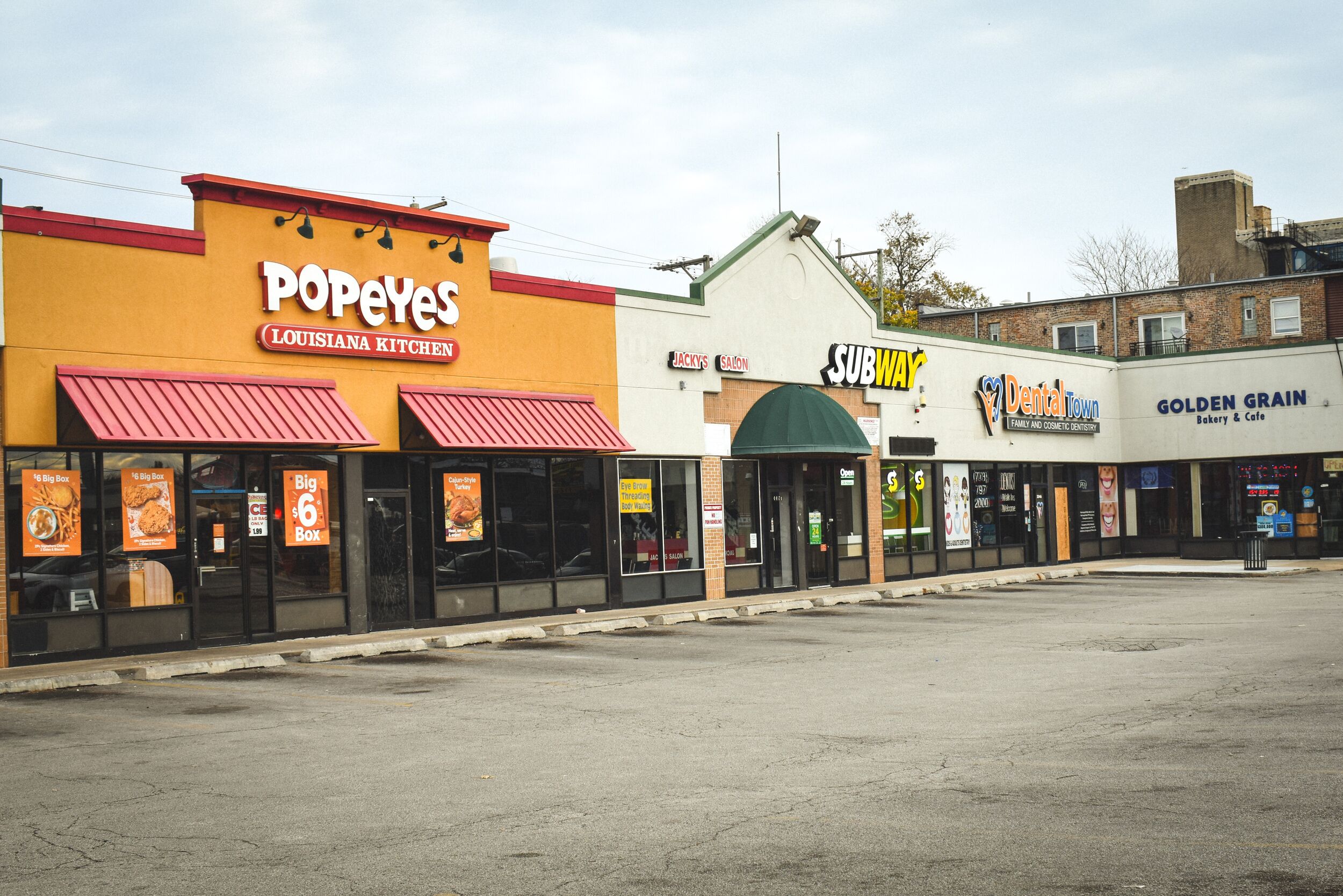
Bending downward so her words meet his forehead, a middle-aged White woman yells, “Why were you running?” It is clear her frustration springs from concern. A young Latino man stands closely behind the struck man and fires back in defense, “Why are you yelling at him? He just got hit by a car.”
On the 81 bus bench across the street, the details of the incident are being translated into Spanish by two women. Behind them, in a car parked in front of the strip mall’s main chain (Popeyes), a Southeast Asian woman talks tightly into her phone, stretching her neck to catch an unobstructed view of the scene.
A story has unfolded and it is spreading in Albany Park fashion, through multiple modes and tongues. Crucially, though, the neighbors don’t turn their backs on the man languishing on the concrete. The floating crowd looks onward, contextualizing the commotion for curious people walking by and family members over the phone, but it soon unites and stabilizes. Several community members encircle the ailing man. They assist the arriving firefighters and police to make sure that the man struck at Lawrence and Kimball survives.
Plenti-culturalism vs. Practi-culturalism
By nature of Chicago’s spoke-and-hub intracity rail network, the hour-and-a-half trek over here required a swing through the Loop. And as a consequence of being hungry and American, I had no choice but to redeem my McDonald’s “Free Fry Friday” promotion in the location of McDonald’s global headquarters, the Loop. Golden potatoes in hand, I walk northward, admiring Chicago’s kinetic core.
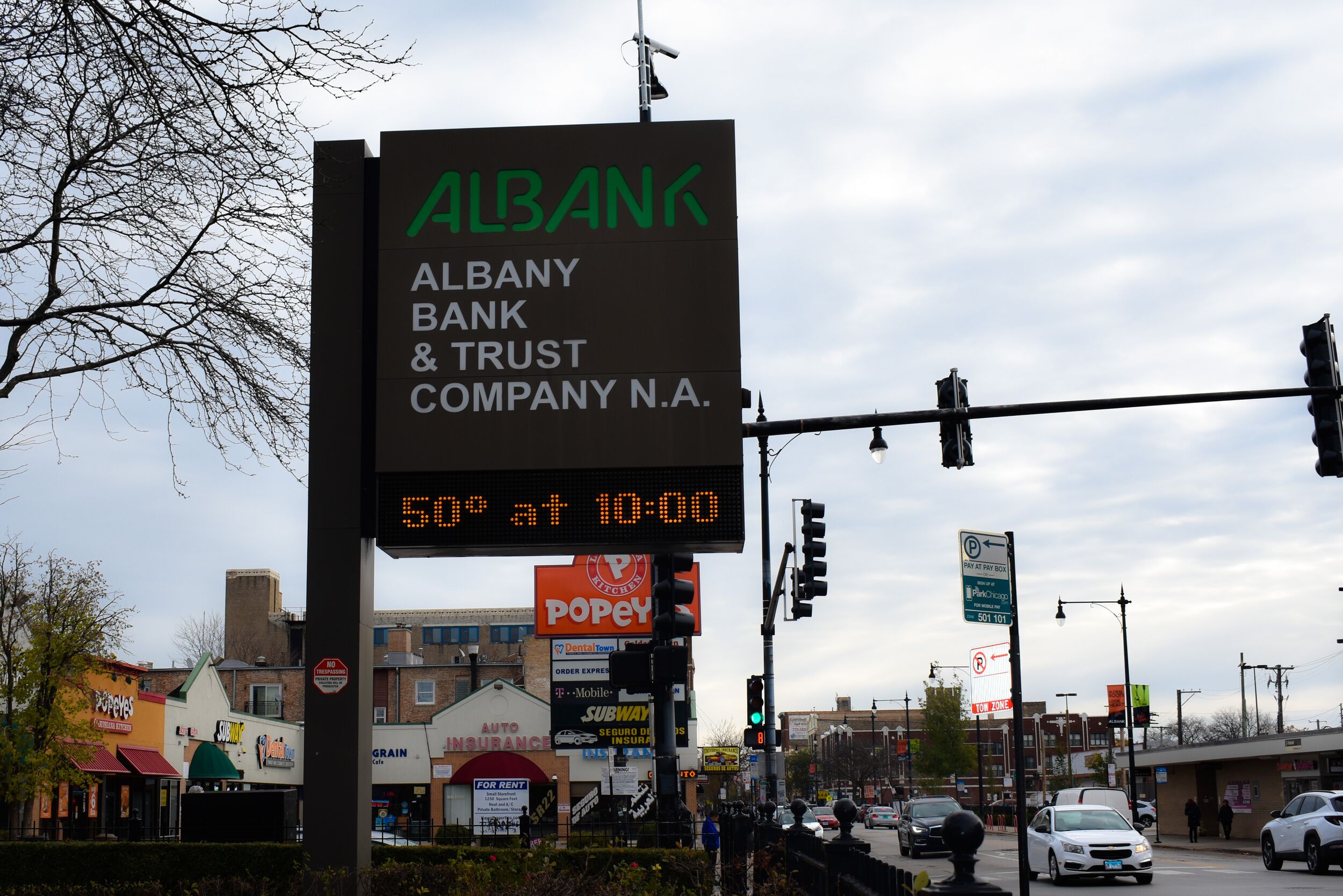
Downtown Chicago represents, to borrow the Latin participle, a constructed plenti-culturalism where culture exists in large and ample amounts. A plenti-cultural environment concertedly crams as much indication of culture into as little commercial space and building facade as possible with the intention of turning a profit. At Michigan and Ohio Avenues, a Mexican art pop-up advertises shelves full of authentic artesanía. Across the street, an immersive Prince exhibit, a collaboration between New York-based event company Superfly and the Prince estate, promises to leave visitors “educated” about and “inspired” by the groundbreaking funk and soul musician. A block west, the $20 million venture between entrepreneur Oscar Farinetti and Batali & Bastianich Hospitality Group Eataly fits enough Italian delicacies under one roof to make Giada de Laurentiis’ pantry jealous.
In contrast, Albany Park optimizes practi-culturalism— a continuous and utilitarian flow of culture seldom bestowed custom commercial space. Instead, it must occupy any space available to it. As the sun sets, workers at Prince: The Immersive Experience and Eataly return to peripheral neighborhoods like Albany Park, situated at the terminus of CTA’s Brown Line. Albany Park serves as local evidence of philosopher Mikhail Bakhtin’s assertion that “the most intense and productive life of culture takes place on the boundaries.”
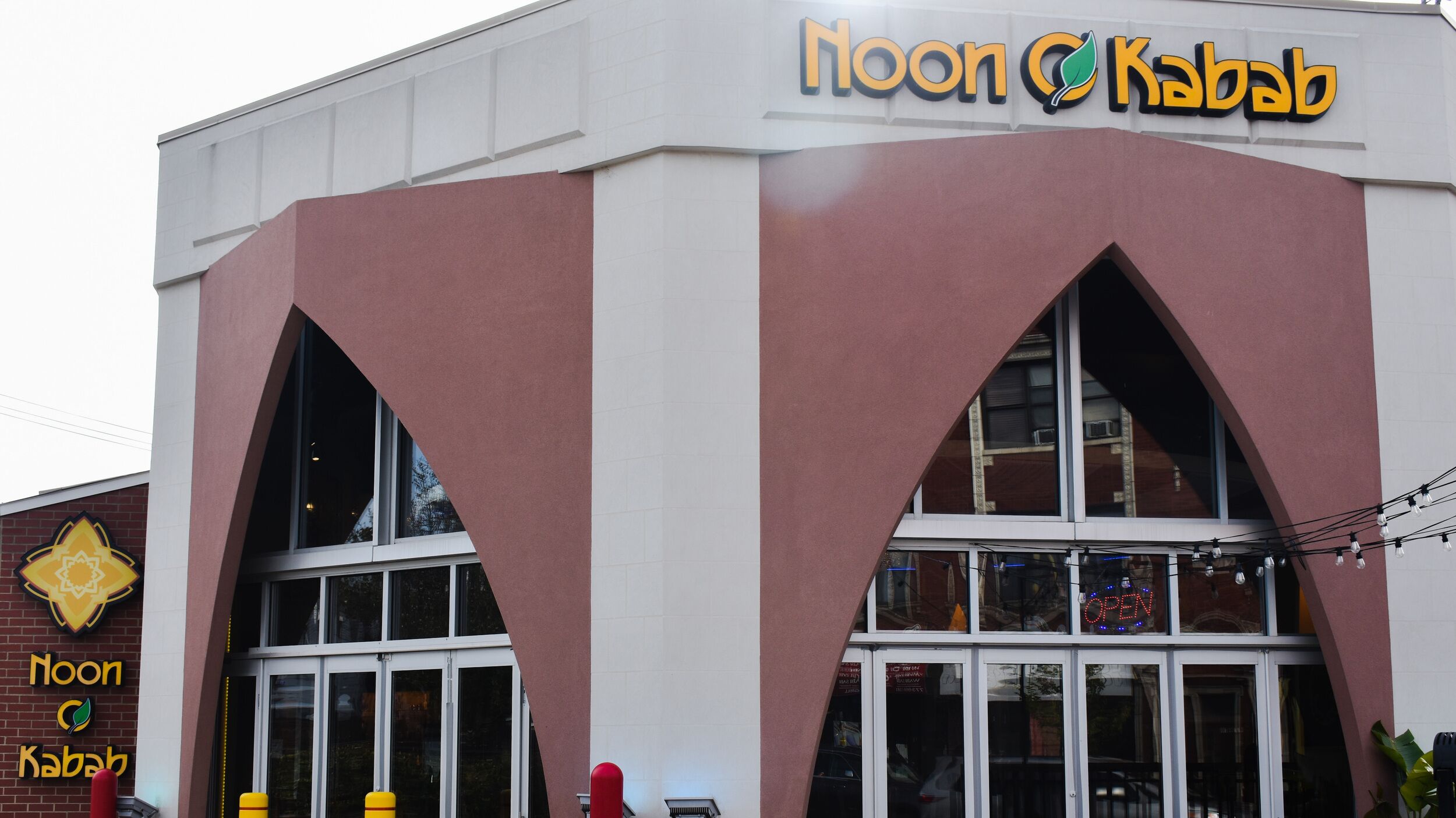
The neighborhood’s cultural diversity is incidental, not enshrined in special-made buildings or exhibits, but in bungalows and brick storefronts left by assimilating White communities, first German and Swedish, and then Jewish Chicagoans moving to northern suburbs in the late twentieth century. An ornate Art-Deco facade pokes out above the window of the full plasma center lobby where donors receive $50 for their first two blood donations. It sits a few doors down from a business where residents can send international money orders, a paquetería in the strip mall anchored by Popeyes. These low-flung commercial complexes punctuate Albany Park’s streetscape. They house Filipino and Korean restaurants, joyerías, Kabiha Halal fast food spots, and doctors’ offices led by specialists with last names like Ghandour and Ha.
Unlike many neighborhoods in Chicago, Albany Park’s residential blocks are ethnically integrated, but in the area known for its high concentration of culture-based community organizations, ethnicity is still the most automatic way to build alliances. After the sun sets, I visit a famed Korean restaurant, Kim’s Home Cooking. There, I wait thirty minutes to order while patrons fluent in Korean are served first. Nevertheless, the vegetable mandu and tofu are worth the delay.
Yet, in spite of structural practi-culturalism, Albany Park’s old-timers and long-standing establishments have begun remaking their neighborhoods’ structures in more culturally-specific forms. On Kedzie, sweeping stucco drapes the floor-to-ceiling windows of Noon O Kabab, a Persian eatery. The design calls back to the four-centered arches of the Persian Empire, but ultimately, the restaurant’s silhouette more closely resembles a BJ’s. It opened its doors 25 years ago with eleven tables. Today it takes up a footprint triple its old size and inside, a family surrounds every table. The place is packed.
Back at Lawrence and Kimball, the scene has dispersed. The struck man has been driven away for medical care. Crowd members have migrated home to non-arterial blocks or gone to their respective bus stops, wading into the street as the 81 or 82 buses roll up. (At this intersection, the buses never bother pulling to the curb.) Josh Garber’s lotus blossom columns droop beside the double doors of Kimball like metallic ballsacks. Albank’s corporate garden sculptures are no longer stained by blue sirens. Now, they’re washed in pink. The sky is watercolored, gentle. The clouds, however, are done with conviction: purple and gray acrylics. They forebode a bundled-up weekend. The retro Albank sign flashes orange. 48° at 6:26. Slide wipe.
